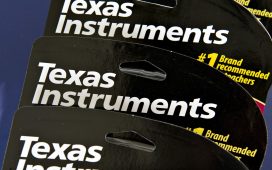Nicoletaionescu | Istock | Getty Images
When it comes to bank deposits, $250,000 is the key number experts are talking about in light of recent financial shocks in the banking sector of a severity not seen since the Financial Crisis.
That amount is the threshold for which bank depositors should be mindful of when it comes to whether or not their money is insured by the Federal Deposit Insurance Corporation, or FDIC. Coverage limits are per depositor, per ownership category, per bank.
Deposits below that amount are covered, while money above that threshold may not be insured if unforeseen circumstances occur at a financial institution.
Yet the government recently made an exception for people with more than $250,000 on deposit at Silicon Valley Bank and Signature Bank.
More from Personal Finance:
The IRS plans to tax some NFTs as collectibles
Here’s how to vet online financial advice
‘Staying the course is the play’ for investors
On Friday, President Joe Biden said if further instability occurs, the FDIC may guarantee deposits above $250,000 again.
The $250,000 threshold was set by Congress in 2010. Some experts say that isn’t enough and should be raised.
Congress can temporarily suspend the limit. However, Treasury Secretary Janet Yellen has said uninsured deposits should only be covered in the event a “failure to protect uninsured depositors would create systemic risk and significant economic and financial consequences.”
Generally, most consumers do not have to worry about their deposits.

“If you have under $250,000 in a bank account, this is of no concern to you — you are fully insured,” said Jill Castilla, president and CEO of Citizens Bank of Edmond, a community bank located in Edmond, Oklahoma.
“It’s just whenever you are starting to see those limits that you might have some exposure,” Castilla added.
Experts say there are still ways to gain FDIC coverage even if you are over that $250,000 limit.
Find institutions guaranteeing higher deposits
FDIC insurance generally covers $250,000 per depositor, per FDIC-insured bank, per ownership category. But certain financial institutions may work around those limits by working with other financial institutions to guarantee higher deposit levels.
Citizens Bank of Edmond offers additional coverage, with a limit of $150 million per depositor, through IntraFi Network.
“If you’re able to use IntraFi, then you don’t necessarily have to go to another bank to get another $250,000,” Castilla said.
If you have under $250,000 in a bank account, this is of no concern to you — you are fully insured.
Jill Castilla
CEO of Citizens Bank of Edmond
Because the bank’s average deposit is typically $25,000, Citizens Bank of Edmond does not use the amplified coverage often, Castilla said.
To enroll, customers need to sign an agreement to allow the bank to use IntraFi to cover their deposits.
Customers can also review the list of banks in the IntraFi network and exclude those with which they prefer not to have deposits, Castilla said.
Those who sign up with IntraFi can choose from different products with either variable or fixed rates provided through money market funds or certificates of deposit, Castilla noted.
From the depositor’s standpoint, the process should be easy.
“The banker should be having these conversations with them if they have uninsured deposit exposure,” Castilla said.
Of note, there are ways of obtaining coverage for balances in excess of $250,000, including the Depositors Insurance Fund, which is privately sponsored by the industry. Some states also provide backstops for FDIC insurance, Castilla noted.
Other kinds of accounts may offer different protections, such as the National Credit Union Administration for credit union deposits or Securities Investor Protection Corporation for brokerage accounts.
To be sure, it is best to read the fine print to fully understand your coverage limits.
Add beneficiaries to your account
Another way of getting more than $250,000 in coverage for your deposits is to add beneficiaries.
If you have $1 million in deposits, for example, you would only have $250,000 covered on your own, Castilla said, leaving $750,000 uninsured.
But if you add four beneficiaries — a spouse and three children — that provides another $750,000 in coverage, or $250,000 per person, so long as those beneficiaries do not have other deposits at the bank, Castilla said.
Before you use this strategy, you should carefully consider how this will fit into your estate plan.

Per FDIC rules, deposits owned by one person without any beneficiaries are considered single accounts. However, once the owner of a single account designates one or more beneficiaries, the account may be insured as a revocable trust account, so long as it meets certain requirements.
Keep in mind that beneficiaries always get priority over a will, noted Carolyn McClanahan, a certified financial planner and founder of Life Planning Partners in Jacksonville, Florida.
“If you have a beneficiary account, then that asset is not going to go through your will,” McClanahan said.
Also, if you name your children as beneficiaries, but they are not yet 18, a guardian will have to take control of the money until they become adults, McClanahan noted. That can make it more costly for them to claim the money, she said.
Alternatively, you may establish a trust and specify in your will that the money should be held there until your children are of age. Then, on your bank beneficiary forms, you would name the trust instead of your children.










